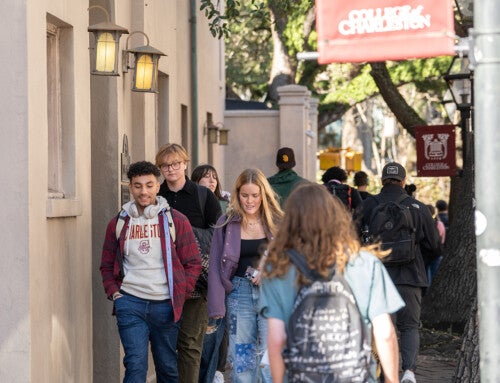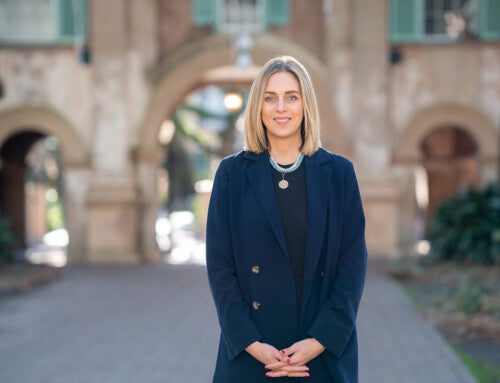The College of Charleston’s Avery Research Center for African American History and Culture is hosting a groundbreaking traveling exhibition “Word, Shout, Song: Lorenzo Dow Turner Connecting Community through Language” on view now through April 4, 2012. Curated by Alcione Amos of the Smithsonian Institution’s Anacostia Community Museum, “Word, Shout, Song” looks at the life, research, and scholarship of Lorenzo Dow Turner, perhaps the first African-American linguist. It also focuses on how his discoveries linked communities in Africa to the New World through language. “In assembling this exhibition, most exciting to me was how I was able to connect words from Gullah, English, and Portuguese to their African origins, eighty years later, based on Turner’s work in the 1930s,” said Amos. “His work is still relevant today.”
 “Word, Shout, Song” is three stories in one: scholarship and success against the odds, a quest to crack a linguistic code, and a discovery spanning continents. The exhibition presents Turner’s pioneering work in the 1930s, which established that people of African heritage, despite slavery, had retained and passed on their cultural identity through words, music, and story wherever they landed. His research focused on the Gullah/Geechee communities in South Carolina and Georgia, whose speech was dismissed as “baby talk” and “bad English.” He confirmed, however, that the Gullah spoke a Creole language that still possessed parts of the language and culture of their captive ancestors. Turner’s linguistic explorations into the African diaspora led him to Bahia, Brazil, where he further validated his discovery of African continuities.
“Word, Shout, Song” is three stories in one: scholarship and success against the odds, a quest to crack a linguistic code, and a discovery spanning continents. The exhibition presents Turner’s pioneering work in the 1930s, which established that people of African heritage, despite slavery, had retained and passed on their cultural identity through words, music, and story wherever they landed. His research focused on the Gullah/Geechee communities in South Carolina and Georgia, whose speech was dismissed as “baby talk” and “bad English.” He confirmed, however, that the Gullah spoke a Creole language that still possessed parts of the language and culture of their captive ancestors. Turner’s linguistic explorations into the African diaspora led him to Bahia, Brazil, where he further validated his discovery of African continuities.
The exhibition begins with a look at Turner’s early life. Profoundly influenced by his college-educated father on the importance of academic excellence, Turner (1890–1972) obtained successively higher degrees in English from Howard, Harvard University, and the University of Chicago. Denied teaching positions at white institutions, he built his career in academia at several black colleges, including his undergraduate alma mater. A summer stint teaching at the now-South Carolina State University, however, is where he first heard the Gullah dialect that would captivate him for the rest of his career. Convinced that the speech pattern was not illiterate English but instead a distinct language incorporating words and structure from African languages, Turner focused his interest into a lifelong project.
Turner studied various African languages, including Twi, Ewe, Yoruba, Bambara, and Wolof as well as Arabic, to link to Gullah vocabulary. Through his pursuit of information, he became the first African-American member of many organizations, including the Linguistics Society of America.
“Word, Shout, Song” recounts his travels to South Carolina and Georgia and abroad to London, Paris and, finally, West Africa to record and compare the speech of hundreds of informants. His journeys feature fascinating stories of adventure and discovery as well as of the difficulties he encountered with bulky equipment and remote access.
A major linguistic achievement occurred when Turner determined the “ring shout”, a Gullah religious dance, was a possible direct inheritance from enslaved Muslims—the name “shout” being derived from the Arabic word Sha’wt, which referred to movement around a sacred object rather than sound. Another example resulting from Turner’s early Georgia recordings is a later major discovery by scholars Joseph Opala, Tazieff Schmidt, and Cynthia Koroma who, in 1990, realized a song passed down through generations connected the Mende people of Sierra Leone to their American kin in Georgia.
A section of the exhibition focuses on Turner’s research on culture in Bahia, Brazil where a much larger number of enslaved Africans had been brought than to the United States, yet featured the same languages that influenced the Gullah. The Afro-Brazilian religion Candomblé heavily incorporated African survivals; and when informants recognized words in the Sea Island recordings, Turner again saw language connecting the worlds of the African diaspora.
Turner’s many writings, presentations, and publications included his book, Africanisms in the Gullah Dialect, published in 1949; and it is still the standard reference for Creole language research today.
Highlights of “Word, Shout, Song” include:
- Turner’s recording device and special-character typewriter
- Rare recordings of Gullah speech and songs and rare photographs of informants produced by Turner
- Audio and written comparisons of words that are similar and from languages spoken in the Americas and Africa
- The section “Singing for the Ancestor: A Song that Made the Roundtrip to Africa”
- The section “The Black Seminole: The Gullah that Got Away” that recounts the history of fugitive slaves from Georgia and South Carolina whose descendants are now found in Florida, Texas, and Mexico and speak an ancient form of Gullah.
Organized by the Smithsonian Institution’s Anacostia Community Museum in Washington, DC and based on one of its special collections, this traveling exhibit version of “Word, Shout, Song” was made possible by the James E. and Emily E. Clyburn Endowment for Archives & History at South Carolina State UniversityTickets are now available for the reception.
Call the Avery Research Center at 843.953.7609 for more information.



